2010 Toyota Prius – Click above for high-res image gallery
When you sit in the 2010 Toyota Prius, you notice all those little things that provide the "Prius experience" – the shift lever, information screen, center-mounted instrument panel – are all present, but they're slightly different and noticeably improved. The time it takes to adapt to the revised interior is emblematic of the new Prius experience. It's the same oddly shaped hybrid that almost two million buyers love, but it gets better mileage, looks sharper and is packing more technological whiz-bangery than any vehicle this simple to drive has the right to.
We recently tested the 2010 Prius at its North American launch through the vineyard-covered fields and hills surrounding Napa, California. Through it all, the hybrid, officially rated at 50 mpg, performed well and delivered better-than-expected fuel economy. In fact, when we pushed the car's eco prowess by using the EV mode as much as possible and employing a few other tricks, we blew that EPA estimate out of the water by almost 15 mpg. And we weren't alone.
Photos Copyright ©2008 Brad Wood / Weblogs, Inc.
The Prius' chief engineer, Akihiko Otsuka, drove a 33-mile route in and around Napa and averaged 62.9 mpg. During the drive week, he levied a Beat-The-Chief challenge to anyone who wanted to take him on. AutoblogGreen was able to get the in-dash display to read in the mid- to low-70s for most of the route, but the last ten miles on a busy 55-mph road dropped that to 64.5 mpg. Not bad, but only good for a standing near the absolute bottom of the rankings among other journalists. Overall, the best score was 94.6 mpg, although that involved some less-than-real-world driving behaviors and conditions. The best "honest" score was 75.3 mpg. In all, about half of the journalists were able to get over 70 mpg, while the rest, save two, were able to get more than 66 mpg.
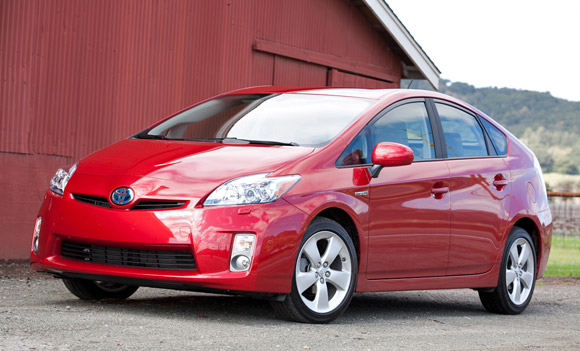
Increased fuel economy is one of many ways the 2010 Prius has evolved, but the driving experience is similar to the last generation. Despite a slightly longer wheelbase, wider track and new low-rolling resistance tires, you don't notice any serious changes from the driver's seat. The front MacPherson struts and improved body rigidity keep the ride smooth around town and on the highway. Overall, it's the same commuter-friendly conveyance you'd expect and, thankfully, rearward visibility is vastly improved over the outgoing model.
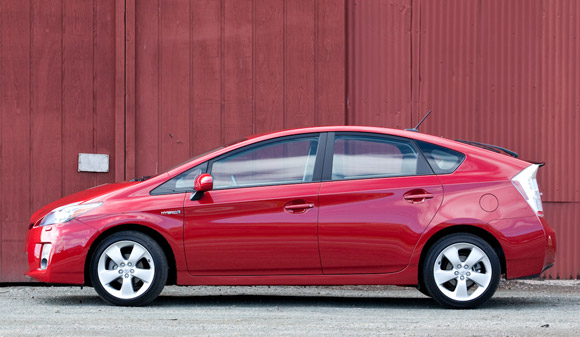
However, one small change we did notice was the absence of that infernal beeping when the car is shifted into Reverse that plagued the outgoing model. After asking Otsuka about the change, we were told that the pre-production models we were testing had the feature removed, but when the production model goes on sale, the beep will return. The good news? Otsuka said dealers can turn off the sound at the customer's request.
Speaking of current Prius owners, the automaker is convinced they'll trade up. In fact, Toyota's Bob Carter said the company expects 20-25 percent of third-generation Prius sales will be repeat buyers. So where will the other 80-85 percent come from? It's clear there's a hybrid sales fight brewing between Toyota and Honda, and Toyota needs to convince buyers that paying a few thousand dollars more for the Prius over the new Honda Insight is worth it.
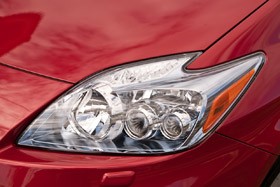
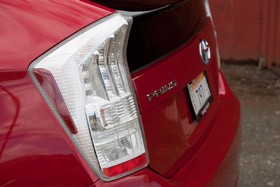
The Insight, which starts at $20,470, is smaller and has fewer features than the Prius, but it's obviously a direct competitor. Based purely on aerodynamics, the Prius beats the Insight (0.25 versus 0.28 Cd). Honda was understandably proud of its "world-leading coefficient" number when the Insight was announced earlier this year, but Toyota has clearly bested its Japanese rival in this department. Does it matter? The Insight is a fun drive that won't attack your wallet at the pump or its point of purchase, while the Prius gets better mileage, is larger and comes with a cache of green cred that would fill the Grand Canyon.
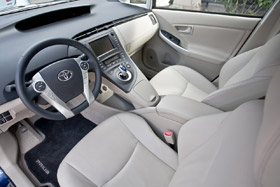
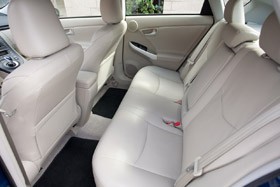
Throw in the new 2010 Ford Fusion Hybrid, which is even larger and starts at $27,270, and 2009 is shaping up to be a good year for potential hybrid owners. With plug-in vehicles supposedly coming in 2010 (and pure electric vehicles not long after) and the poor economy, all bets are off on which hybrid will come out on top. Still, Toyota polled current Prius owners and 90% said their next car will be a Prius. The automaker wanted to offer these repeat buyers some upgraded technology, so it has included two new features on the 2010 Prius: Lane Keep Assist and Intelligent Parking Assist.
Lane Keep Assist (LKA) is triggered by pressing a steering wheel-mounted button that turns on the Lane Departure Warning system. The system looks for yellow and white lines on the pavement and lets the driver know if he or she starts to leave the lane. Lane Keep Assist is used in conjunction with the Prius' Dynamic Cruise Control, but it won't drive for you. The system knows if you let go of the wheel and using a turn signal will disengage LKA entirely.
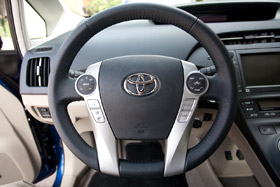
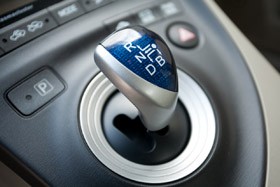
Another fancy feature is Intelligent Parking Assist (IPA), which makes quick work of parallel parking. When pulling up to an available parking spot, you push a button above the driver's right knee to activate a sensor that can see where parked cars are sitting. When the system finishes its calculations, the rear-view camera turns on and displays a grid that estimates the intended parking position. If the grid is correct, the driver presses "OK" and then the system takes over. From this point, all the driver does is control the speed of the car using the brake pedal. If the driver takes his or her foot off of the brake pedal, IPA will shut down when it reaches its speed threshold. As smart as the new Prius is, however, it's not smart enough to know if a person suddenly appears in the designated parking spot. We were able to test IPA, and it works as advertised. Both LKA and IPA are available as part of the 2010 Prius' Advanced Technology Package (pricing TBD).
| 2010 Toyota Prius |
2009 Toyota Prius |
|
|---|---|---|
| Length | 175.6 inches | 175 inches |
| Width | 68.7 inches | 67.9 inches |
| Height | 58.7 inches |
58.7 inches |
| Wheelbase | 106.3 inches |
106.3 inches |
| Gas Engine |
1.8L Atkinson 4cyl |
1.5L Atkinson 4cyl |
| Horsepower Torque |
98 @ 5,200 rpm 105 @ 4,000 rpm |
76 horsepower 82 lb-ft of torque |
| Elec. Motor Power |
80 horsepower 153 lb-ft of torque |
67 horsepower 295 lb-ft of torque |
| Hybrid Net HP |
134 |
110 |
| EPA Fuel Economy |
49 city/50 highway |
48 city/45 highway |
All new Prius owners will enjoy three new driving modes -- eco, power and EV -- along with a fourth when the other modes are off (you can read an in-depth description of each mode here). While Toyota cites an official EV mode (electric-only) top speed of 25 mph, we discovered that it's easy to get the gas engine, which now checks i at a larger 1.8 liters producing 94 hp, to kick in at a much lower speed if the battery has three or fewer bars. This information is available in the new multi-information display instead of the touch-screen on the current model. Volume and climate controls are redundant with a nifty new feature on the steering wheel called the Touch Tracer Display.
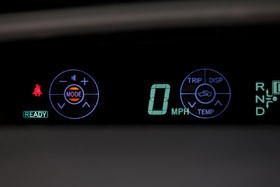
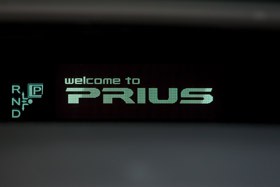
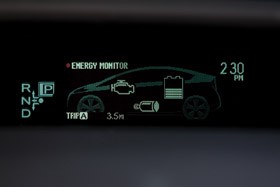
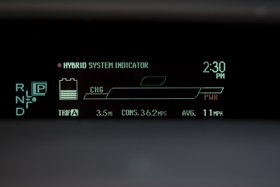
We noticed when cruising in EV mode, with plenty of juice in the battery, that when you go over 25 mph the EV mode does not re-engage when the car dips below the magic mark again. Otsuka didn't have an answer for why they designed the system like this, but it seems like Toyota intends EV mode to be used sparingly, likely to preserve the battery pack's longevity. Turn EV mode on when you're leaving your driveway and, when it clicks off, focus on Eco mode if you're into saving fuel. During the Beat-The-Chief drive, we engaged the EV button every chance we had, and while 65 mpg isn't bad, it does require constant attention to maintain.
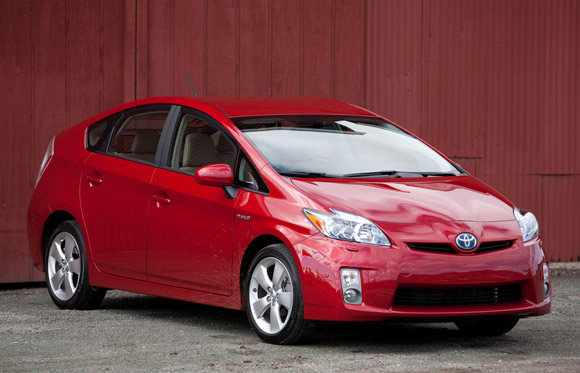
In the end, Toyota knows most people drive a Prius because it makes saving fuel super simple. With the outgoing model, owners put up with abysmal rearward visibility because they got 45 mpg. They put up with the reverse beeping and the spaceship look because they can drive by gas stations without stopping more often. Now, with 50 mpg – or better – new Prius owners have even more reasons to quietly deal with any negatives the new car might have to offer. We have to wait until Toyota announces pricing to determine just how good a deal it is, but for the myriad of fuel-conscious consumers, the 2010 Prius could be their best option available.
Photos Copyright ©2008 Brad Wood / Weblogs, Inc.
2010 TOYOTA PRIUS MEDIA "BEAT THE CHIEF" FUEL ECONOMY CHALLENGE FINAL RESULTS
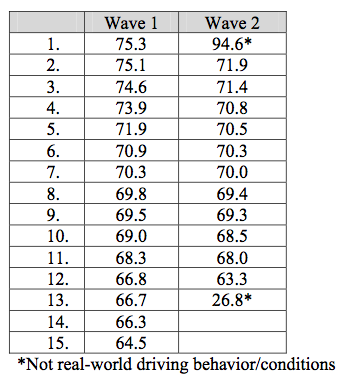
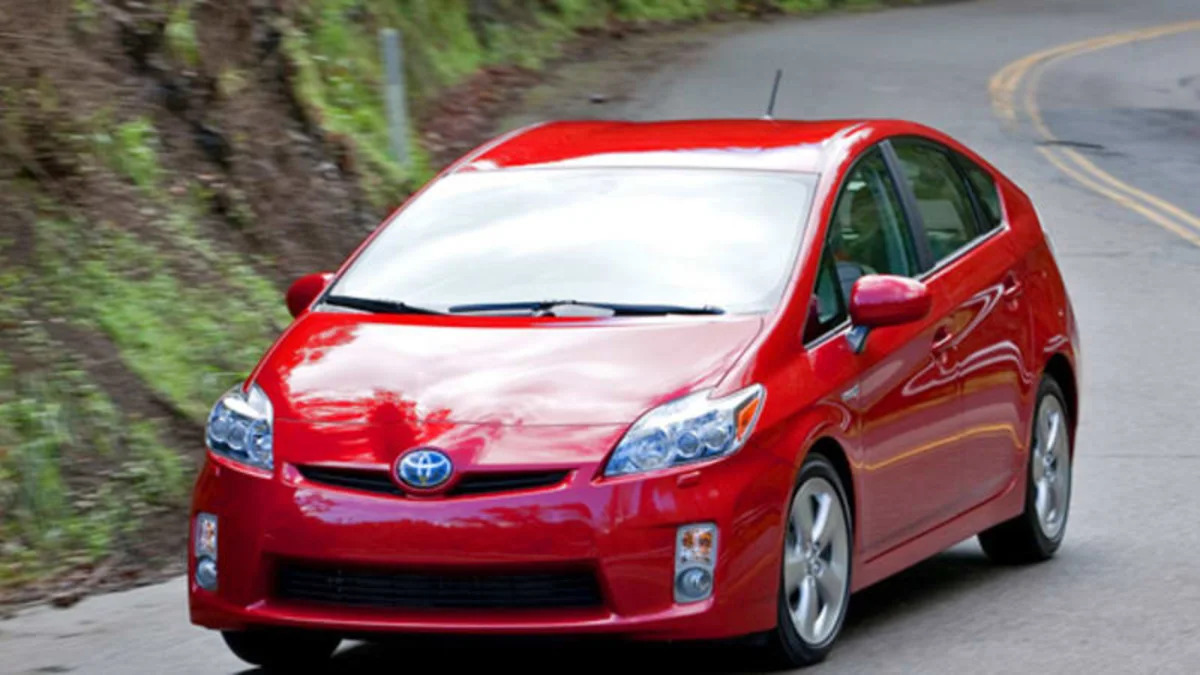
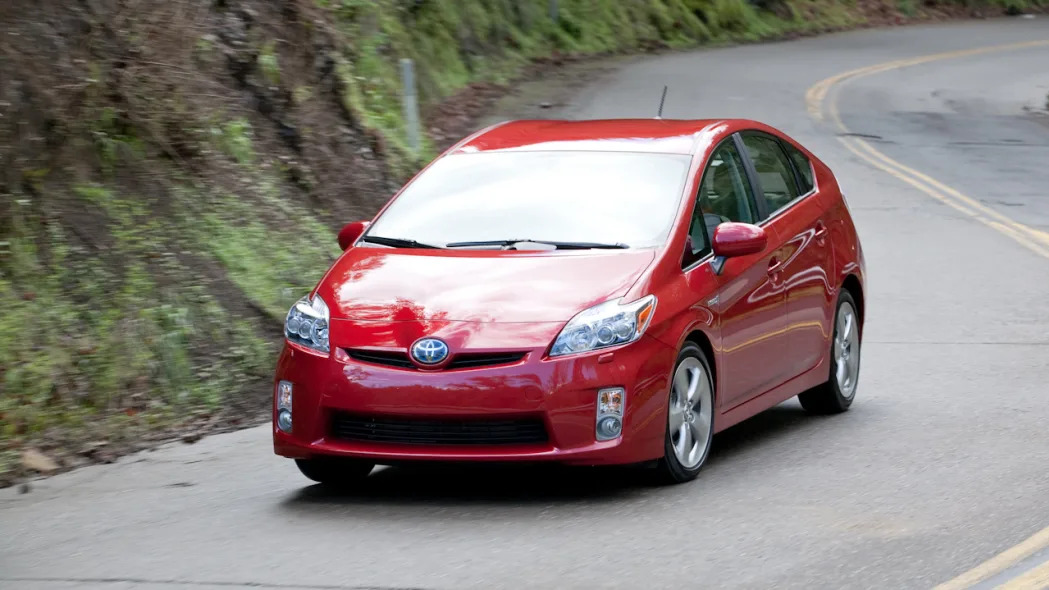

Sign in to post
Please sign in to leave a comment.
Continue